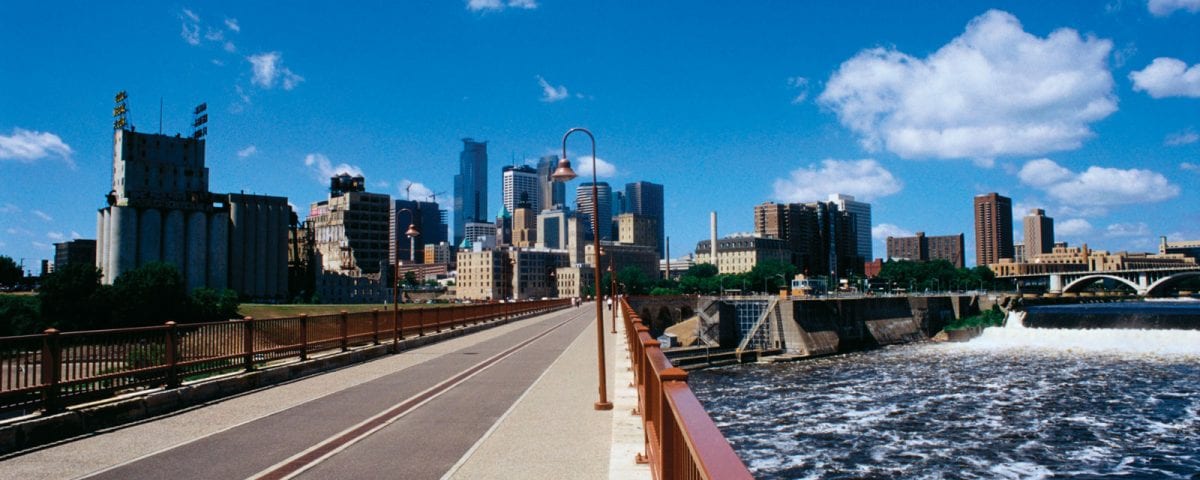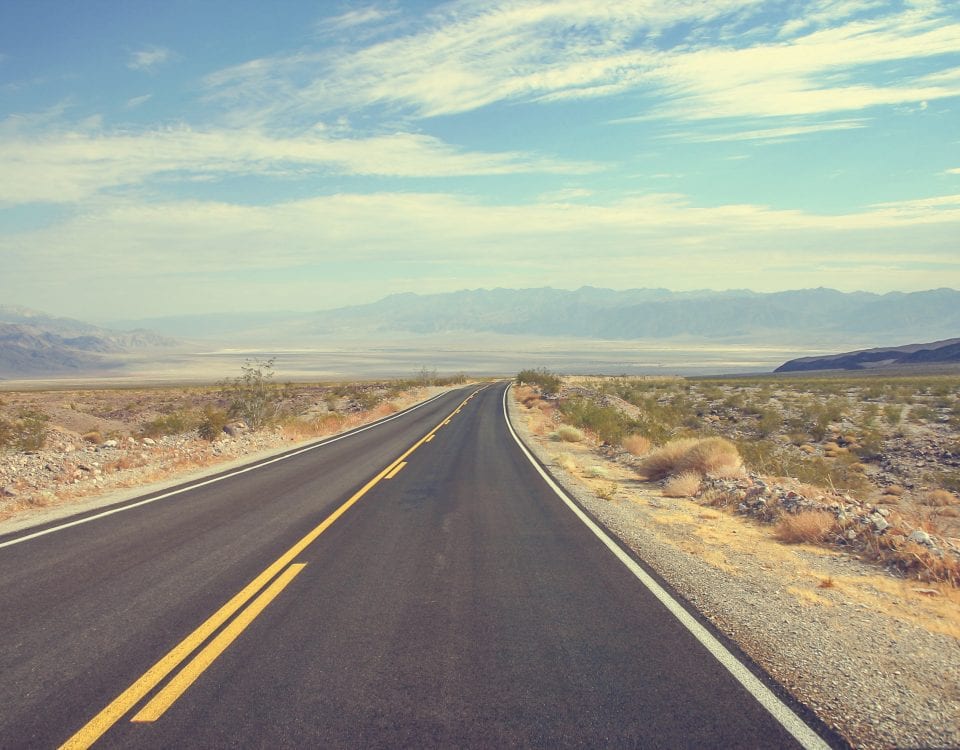
Day 48: Gardens, Malls, Vikings and Dairy Queens
May 6, 2021
Day 46: Winding Our Way Through Wisconsin
May 4, 2021Most recently updated on February 17, 2024
Originally posted on May 5, 2021
Minneapolis is considered to be the most prominent city between Chicago and Seattle.
The dominant center of industry and culture in the upper Midwest.
A number of large corporations are headquartered here. The arts and music have a strong presence. The city also makes good use of the Mississippi River that flows through its midsection.
It has one of the largest LGBTQ communities in the country and the only Somali museum in the world.
The city was even the setting for one of the most popular television shows of the 1970s.
Yet, Minneapolis was also the center of protests and conflict because of what happened at 38th Street and Chicago Avenue in the southern sector of the city on May 25, 2020.
That’s when 46-year-old George Floyd, a Black man accused of passing a counterfeit $20 bill, died after Derek Chauvin, a white Minneapolis police officer, put his knee on Floyd’s neck for more than 9 minutes while Floyd was handcuffed and lying on his stomach next to a squad car.
The initial legal saga came to an end on April 20, 2021 when a jury convicted Chauvin of murder in Floyd’s death.
There is a lot to talk about when we arrive in Minneapolis, but to get here we must first drive across the center of Wisconsin on Day 47 of our journey to assess America’s struggling and changing dairy industry as well as check out one of the largest veteran memorials in the country.
————————————
We depart from Milwaukee by heading north on Interstate 41, gliding past towns such as Fond du Lac and Oshkosh as well as Lake Winnebago.
After nearly 2 hours, we arrive at Fremont, a village of less than 700 people in the heart of dairy country.
The area was initially inhabited by the Menominee and Potawatomi tribes before the Menominee ceded their land in an 1836 treaty. It was first settled by Europeans in 1849 with the village formally organizing in 1888.
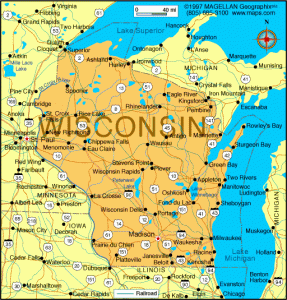
Dairy farming took over for wheat farming in the late 1800s in this part of Wisconsin. By the early 1900s, 90 percent of the state’s farms had dairy cows. By World War One, the state led the nation in cheese and butter production. It was also number one in milk production until 1993 when California took over.
The state has proudly worn its title of “America’s Dairyland,” but now some farmers are switching to hazelnuts, goats and other alternatives as the dairy industry struggles.
The dairy farming industry has been declining here since 2014 when milk prices started to drop along with demand and overproduction that resulted in cheese stockpiles of 1 billion pounds. Alternative products such as soy milk have taken a bite out of the market.
USDA officials say there are about 6,000 dairy farms remaining in Wisconsin, down from 16,000 in 2003. That number still represents one-fourth of the dairy farms in the United States and 95 percent of Wisconsin dairy farms are family-owned.
In addition, the state is still churning out more than 30 billion pounds of milk per year, the second highest among states behind only California. It also produces more than 3 billion pounds of cheese per year, the highest among states.
One of the explanations for the healthy production may be that while the number of milk cow dairy herds is declining, the total number of milk cows remains steady. That means the herds that are left are getting larger.
———————————–
From Fremont, we take Highway 10 in a northeasterly direction, slicing through more Wisconsin dairy country.
After slightly more than an hour, we reach Marshfield, a community of 18,000 people where lumber and cheese have dominated for quite a while.
Marshfield was first settled in 1872 when the Wisconsin Central Railway needed a depot halfway between Colby and Stevens Point. The first structure was a two-room log hotel built in a clearing in the forest.
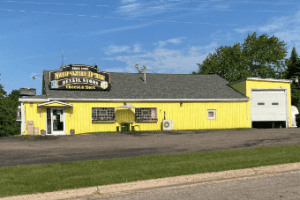
The Nasonville Dairy in Wisconsin produces award-winning cheeses. Photo by Nasonville Dairy.
The first industry was a stave and spoke factory. A saw mill was built in 1878. A planing mill, a furniture factory and a flour and feed mill followed. In the late 1800s, a number of small regional railways were built, giving Marshfield the nickname of “Hub City.” German immigrants made up a significant portion of the population in 1890s.
Due to the surrounding pine forests, woodworking has remained a bustling industry here. Roddis Lumber and Veneer produced plywood and supplied Liberty ships during World War Two with pre-fabricated wood. After the war, prefabricated home building burgeoned.
In 2011, the local economy diversified when three plants were opened to process sand for hydraulic fracking.
Dairy farming, however, has always been a mainstay. The industry was established in the region with the first cheese factory in 1885. A cold storage plant was built in 1907. Ice cream factories followed as well as milk, chicken and egg processing facilities. Blum Brothers started manufacturing cheese boxes, making about 1.5 million in 1923.
One of the most successful dairy businesses in the area is the Nasonville Dairy. Cheese has been produced at the site since 1885. The current owners, the Heiman family, has been operating the farm since the 1960s. They purchased the operation in 1985.
Ken Heiman, the general manager of the dairy, is certified as a master cheesemaker in feta, cheddar, Monterey and asiago cheeses. The dairy won a second place award at the 2019 U.S. Championship Cheese Contest.
The farm now manufactures 46 million pounds of cheese a year in 40 different flavors.
—————————————–
It’s nearly a 3-hour drive to our final destination and we pass by several interesting places in central Wisconsin along the way.
The first is The Highground Veterans Memorial Park, about a half-hour drive west of Marshfield.
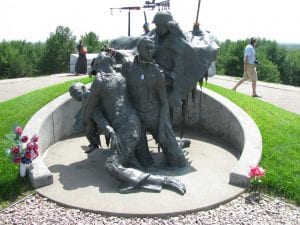
A sculpture at The Highground Veterans Memorial Park in Wisconsin. Photo by Landmark Hunter.
As its name implies, the 155-acre Highground park sits atop a hill near the town of Neillsville. It is a privately owned facility so it receives no federal and state funding, relying on donations and grants. It is free to the public.
The memorial began as a remembrance for veterans of the Vietnam War, but it has grown to include tributes to the Persian Gulf wars, the Korean conflict, World War Two, women who have served in the military, nurses, Gold Star families and even military dogs.
There are statues, Legacy Honor Stones and a museum with exhibits that are constantly changing.
The memorial also organizes programs and events to benefit veterans and their families. Its stated mission is to “Honor, Educate and Heal.”
——————————————–
Upon departing from The Highground, we hop onto Highway 10 west and then head northwest on Interstate 94, a 1,500-mile freeway that takes you from Michigan to Montana.
From here until Day 60 we will be heading in mostly western direction as we navigate back toward our home base.
In about an hour on I-94, we pass through Eau Claire, a community of 70,000 in the central-west portion of Wisconsin.
The region was initially occupied by native tribes, including Sioux and Ojibwe, for thousands of years. It was first discovered by French fur traders in the late 1700s with the first European settlers arriving in 1845. It was named for a French phrase meaning “clear water” and was plotted in 1855.
German and Norwegian immigrants came in the 1860s. The main industry early on was harvesting and logging the abundant timber available along the rivers and lakes. The town developed the nickname “Sawdust City” and by 1890 the city had 75 sawmills and factories that made furniture, electric motors and other products.
In the early 1900s, the economy switched from lumber and manufacturing to rubber, tires and education. Raymond Gillette started a rubber company in 1917 to produce automobile tires. It was bought by U.S. Rubber in 1931 and became Uniroyal. The factory was in operation until 1971 and was the town’s largest employer and one of the world’s leading producers of automobile tires.
The manufacturing industry today focuses on electronics, computer equipment and paper products.
In October 2021, the city teamed up with local organizations to launch a program to help people facing housing difficulties find places to live.
Eau Claire also has a large community of Hmong immigrants from Asia. There about more than 3,000 Hmong in Eau Claire. The Asian immigrants began arriving in the 1970s after the United States withdrew its military forces from Vietnam. That left the Hmong as targets for the country’s new rulers and they sought refuge elsewhere. One of those places was Eau Claire.
Touring Through the Twin Cities
It’s another hour and a half west on Interstate 94 before we cross the St. Croix River and enter Minnesota, the 40th state on our road trip.
Within minutes, we come across the state’s famous Twin Cities.
The first one we encounter is Saint Paul, the state capital and second most populous city in Minnesota with its nearly 300,000 residents.
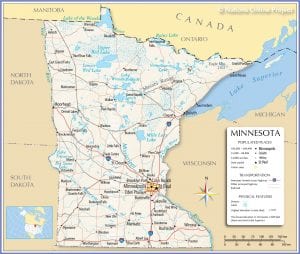
The city is generally lumped in with neighboring Minneapolis, but St. Paul has a history and culture all its own.
The Hopewell mound-building tribe initially lived here 2,000 years ago with the Sioux and Ojiba occupying the area more recently.
In 1805, Zebulon Pike made a treaty with local tribes to obtain 100,000 acres of their land. Fort Shelling was built in 1819. The town was first called Pig’s Eye after a tavern owner. The name was changed to Saint Paul after the cathedral was built in 1841.
The city started to grow in 1849 when it was named capital of the Minnesota Territory. In 1858, 1,000 steamboats were in service in Saint Paul. This was the last spot where boats headed upriver on the Mississippi could unload cargo due to the bluffs north of town. Saint Paul served for a while as a gateway to the Pacific Northwest
The Northern Pacific Railway was completed in 1883. The Great Northern Railway to Seattle was created in 1889.
The local economy started with fur trading, then meatpacking took over and finally manufacturing became dominant.

The Fitzgerald Theater in Saint Paul, Minnesota. Photo by Cinema Treasures.
The Ford assembly plant was a major component of that sector of the economy. It opened in 1925 and closed in 2011. That 122-acre site is now being developed into a project called Highland Bridge that will have 3,000 housing units as well as office and retail space. A virtual groundbreaking was held in July 2020. The first residents moved in during fall 2022. Although construction on the apartments has slowed due to interest rates and rent control measures, a medical office building opened in March 2023.
Saint Paul is also the headquarters of several high profile companies. Among them are Ecolab and 3M.
Urban renewal began here in 1970s. The Rondo Neighborhood was demolished to make way for Interstate 94 in 1956. The community used to hold an annual Rondo Days celebration in the summer, but that event was cancelled for the fourth year in row in 2023 as organizers try to regroup in the wake of the COVID-19 pandemic. It is scheduled to return in June 2024. A proposal is now being discussed to build a boulevard between St. Paul and Minneapolis to replace that section of I-94. If built, the road would be known as Twin Cities Boulevard.
A Winter Carnival is usually held in St. Paul in late January and early February to celebrate the town’s weather.
St. Paul is the location of Fort Snelling, a military post built in 1819 on land sacred to the Dakota tribe at the confluence of the Mississippi and Minnesota rivers. The fort had strategic military significance as well as a center for the fur trade and other industries that used those rivers.
The city is also home to the Fitzgerald Theater, which was built in 1910 and is the oldest theater in town. It was named after F. Scott Fitzgerald, the author of “The Great Gatsby” and a native of Saint Paul. Over the years, the theater has hosted movies, stage musicals, vaudeville shows, concerts and radio shows. Garrison Keillor broadcast his “Prairie Home Companion” here at one time.
Finally, you can find Peanuts sculptures around town in honor of cartoonist Charles Schulz, who was born in Minneapolis and lived in the area until 1960. Schulz published his first comic strip, “Lil Folks,” in the St. Paul Pioneer Press from 1947 to 1950.
————————————–
It’s a short drive from St. Paul to Minneapolis – 15 minutes on Interstate 94 from downtown to downtown. We cross the Mississippi River for the fourth and final time on this journey as we enter.
Minneapolis is the most populous city in Minnesota with 426,000 residents
The city has a certain beauty to it with 22 lakes and 180 parks along a scenic byway that connects most of them in a circular fashion.
It’s had an economy tied deeply to the Mississippi, including the highest waterfall on that lengthy river.
As mentioned earlier, there’s music, museums and a strong literary culture.
However, a current of racism has sifted through the city at various times, the most recent being the murder of George Floyd in broad daylight. This was not, though, the first time that intolerance has reared its ugly head here. It’s happened before and not only to African-Americans but to Jews as well.

St. Anthony Falls in Minneapolis, Minnesota. Photo by DestiMap.
The Sioux and Ojibwa tribes lived here when French explorers first arrived in 1680. Fur trading provided friendly relations initially. The first white settlers arrived in 1849. The city was incorporated in 1867, the same year railroad service started between Minneapolis and Chicago. The city was named after Sioux word for “water” and Greek word for “city.”
Minneapolis was developed around St. Anthony Falls, the highest waterfall on the Mississippi and a source of power for early industry. The nearby forests also provided plenty of lumber for a multitude of sawmills.
Flour milling was the next industry, using grain grown in the Great Plains that was transported to the city’s 34 flour mills. In 1870, Minneapolis was the top flour producer in the United States.
There were also an iron foundry and paper mills. The mills were so active and created enough on-the-job hazards that companies specializing in artificial limbs were established in the 1880s and 1890s.
During the 1900s, the wheat industry continued to be a major component of the economy. The Minneapolis Grain Exchange was one of the largest cash exchange markets in the world.
During the 20th century, the city also became a corporate center. General Mills and Pillsbury were both founded in Minneapolis. Target has been headquartered here since opening its first store in 1962. UnitedHealth Group calls the Minneapolis area home. The headquarters for Best Buy is in the adjacent suburb of Richfield. The city also boasts a strong financial services industry.
The population of Minneapolis peaked at 520,000 in 1950, declined and then stabilized after 1990.
To encourage the construction of new housing, the City Council in 2019 approved the Minneapolis 2040 comprehensive plan. The blueprint contained a provision that abolishes single-family home zoning and allows duplexes and triplexes to be built anywhere in the city. It also altered parking requirements and increases housing options closer to transit. However, the city dropped the proposal in November 2023 after a judge blocked the plan at the request of residents who said it didn’t meet environmental provisions. City officials reverted zoning and other policies back to a 2030 plan while it appeals the judge’s ruling.
Another ambitious idea is also under the environmental microscope. In October 2021, the City Council approved a plan to develop an industrial site along the Mississippi River north of downtown into a 20-acre park ringed with affordable housing, a health center and an amphitheater. A few weeks later, a group of Minneapolis residents filed a lawsuit in an attempt to block the Upper Harbor Redevelopment project, saying the environmental impacts haven’t been adequately studied. In May 2023, city officials ordered an environmental review of the plan.
Through it all, there has been racial tensions in this metropolis.
Starting in 1910, there was red-lining that prohibited African-Americans, Asian-Americans and others from owning property in certain parts of town. From 1920 to 1950, Jewish residents faced persecution and prejudice. In response, Mount Sinai Hospital was opened by the Jewish community in 1951, accepting all races and religion on its staff. The hospital closed in 1991, but it was credited with paving the way for other medical centers in Minneapolis to broaden their ethnic mix.
Then, there’s the murder of George Floyd.
The week after May 25, 2020 incident, the southern section of Minneapolis was inundated with protesters demanding justice and police reform. A police precinct was under siege during one evening. An 8 p.m. curfew was eventually imposed.
During the first year after the incident, Floyd was laid to rest at a widely covered funeral. The intersection where the incident took place was renamed George Floyd Square. The House of Representatives passed the George Floyd Justice in Policing Act, a bill that is still awaiting a vote in the Senate.
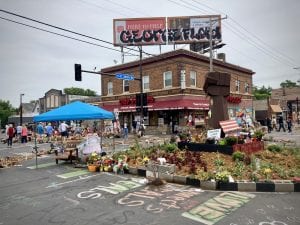
George Floyd Square has become a memorial to the man killed by a Minneapolis police officer as well as a center for the police reform movement. Photo by James Hazelwood.
Then, Minneapolis hunkered down on March 8, 2021, as Chauvin’s trial got under way.
On April 20, the guilty verdicts of murder and manslaughter were announced and the people gathered in George Floyd Square erupted.
Susan Du and Nicole Norfleet of the Minneapolis Star-Tribune were there and reported on the joy and relief that swept through the crowd. The celebration carried into the evening with music and barbecues.
There is still a lot ahead.
George Floyd Square was blocked off by concrete barricades, bicycle racks and anti-tank defense structures by an activist group that had 24 demands for Minneapolis leaders to meet before they turned the street back over. There was a sign at the entrance to the square detailing some rules for those who enter. They included 5 guidelines for white visitors. In June 2021, the intersection was reopened to vehicle traffic, although some of the memorials remain. City officials are now discussing how to “revision” the square. Construction on that project is expected to start in 2025.
In June 2021, Chauvin was sentenced to 22 years in prison. In February 2022, the three other officers who were on the scene when Floyd was killed were found guilty by a jury of federal civil rights offenses. In May 2022, one of those officers, Thomas Lane, pleaded guilty to state charges of aiding and abetting in a second-degree manslaughter as part of a plea bargain that allowed him to avoid more serious charges. In July 2022, Lane was sentenced to 2 1/2 years in federal prison. In September 2022, Lane was sentenced to 3 years in prison on the state charges. In October 2022, former officer J. Alexander Kueng pleaded guilty to manslaughter. In December 2022, Kueng was sentenced to 3 1/2 years in prison. In late April 2023, a judge found former officer Tou Thao guilty of aiding and abetting second-degree manslaughter. In August 2023, Thao was sentenced to 4 years and 9 months in prison.
There’s also the April 11, 2021, shooting death of Daunte Wright in the nearby city of Brooklyn Center. Former police officer Kim Potter was initially charged with second degree manslaughter in that case. In September 2021, a first-degree manslaughter charge was added by state prosecutors. Potter was convicted of two counts of manslaughter in December 2021. In February 2022, she was sentenced to two years in prison. She was released from prison in April 2023.
In the midst of these deaths, Minneapolis is facing a rash of gun violence. In 2021, there were 97 homicides in Minneapolis, tying a record set in 1995. However, homicides declined to 81 in 2022. In August 2023, federal prosecutors charged 14 suspected gang members with drug and gun charges in an attempt to curb the violence. The number of homicides decreased again in 2023 with 72 such killings reported amid an overall decline in violent crime.
In addition, the debate continues over the issue of police reform here. In June 2023, the U.S. Justice Department released a report that concluded that the Minneapolis police department has engaged “in a pattern or practice of conduct that deprives people of their rights under the Constitution and federal law.” In July 2023, Minneapolis police agreed to court-ordered reforms.
Not too far from George Floyd Square is the Somali Museum of Minnesota. The facility, which was founded in 2011, is the only museum in North America devoted to Somali culture. The goal of museum officials is to spotlight the work of Somali artists. Their collection includes more than 700 pieces of artwork. They also offer educational programs about Somali traditional culture. The museum is located here because Minnesota is home to the largest Somalia diaspora community in the United States.
Minneapolis also has a large and vibrant LGBTQ community. The city’s inclusiveness to this community goes back 50 years. In 1970, the first LGBT national gathering was held here. In 1988, the city hosted the first international meeting of GLBT Natives. In 2005, Minneapolis was the first major city to hire a lesbian fire chief. In 2016, the city was given a perfect rating by LGBTQ Nation.
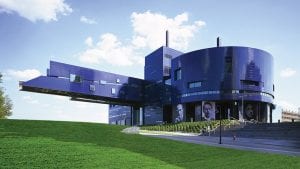
The Guthrie Theater in Minneapolis, Minnesota. Photo by the Guthrie Theater.
OutFront Minnesota was founded in 1987 in Minneapolis. For the past 34 years, the organization has fought for LGBTQ justice and equity.
Minneapolis has a number of businesses that cater to the LGBTQ population. One of them is the Gay 90’s nightclub.
Minneapolis also has a lively music and arts scene.
The singer/songwriter Prince was born here and kept close ties to his home city. Bob Dylan was born in Duluth, Minnesota, but spent his late teen years performing on small stages in Minneapolis.
The city is home to the Guthrie Theater, which opened in its current location in 2006. The facility has three theaters for classic and contemporary plays as well as three full-service restaurants, a cocktail lounge and great views of the Mississippi River.
Nearby is the Mill City Museum, which sits in what was once the largest flour mill in the world. That complex was built in 1874. The museum has re-created an authentic mill experience with exhibits that include the 1878 mill explosion there. There are also educational baking and water labs as well as an observation deck to view the Mississippi.
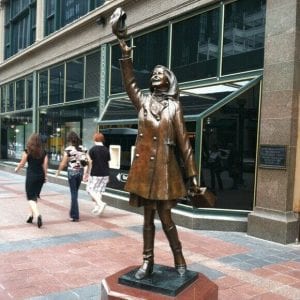
The Mary Tyler Moore statue in downtown Minneapolis. Photo by Atlas Obscura.
One thing you can see from that deck is the Stone Arch Bridge, a 2,100-foot granite and limestone bridge with 21 arches that was built in 1883. It’s the only stone arch bridge that crosses the Mississippi River. The span connects the city’s eastern and western sectors. It was used as a railroad bridge until 1965. It’s now used mostly by pedestrians and bicyclists.
Minneapolis is also home to Open Book, the largest literary and book arts center in the nation. The facility, which opened in 2000, has a retail space but also performance and meeting places.
Finally, the city pays homage to Mary Tyler Moore, whose popular 1970s television show was based in Minneapolis. In her honor, there is a Mary Tyler Moore statue in the downtown area. The statue, unveiled in 2001, depicts Moore’s character, Mary Richards, tossing her hat in the air as she did on the opening of her TV show.
It’s one of several Mary Tyler Moore locales in city. Others include the lake, shopping mall and restaurant seen in the show’s opening as well as the house that the Mary Richards character lived in. That home sold for $1.5 million in 2017.
That’ll close things out for Day 47.
Tomorrow, we’ll visit a World War Two victory garden just south of town as well as the country’s largest shopping mall before we head west toward the Dakotas.

